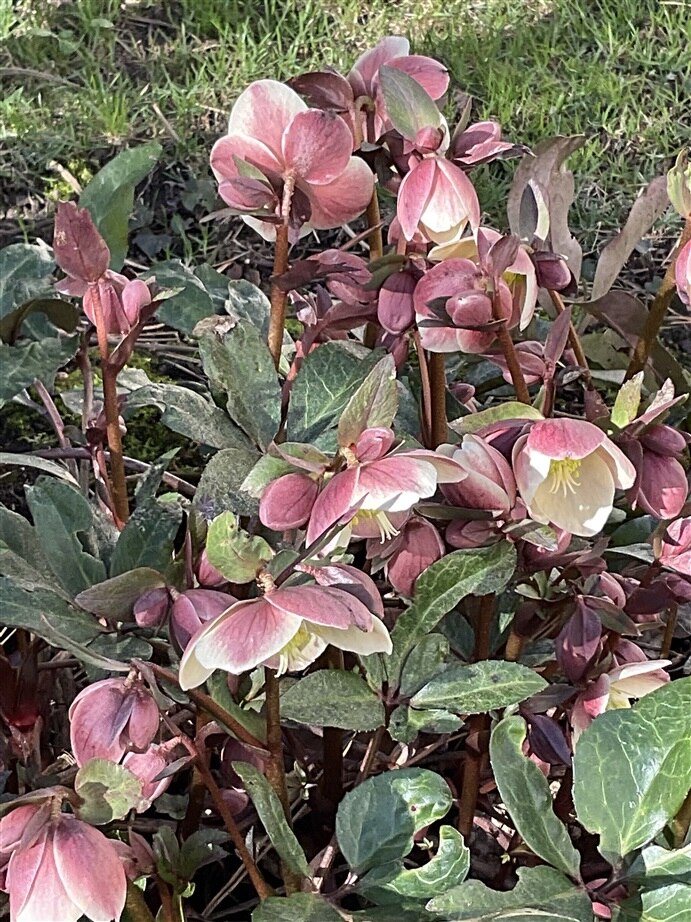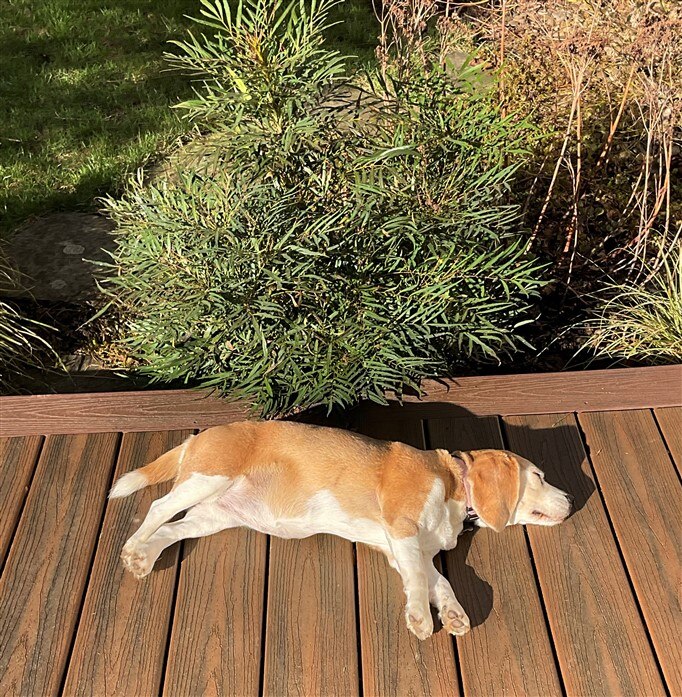A positive aspect of the "Save the Bees Challenge" is that I'm learning a lot about bees and plants in Oregon. I've never really thought about bees being active during the winter. Or even where bees in winter would come from...
beacon_dave recently mentioned in a comment about Snowdrops currently flowering where he lives and how bees might end up missing out on them. Funny, but I had one of those "Speak of the Devil" moments (or Speak of the Bees) today. We've been having our typical Oregon winter which is cold and dreary, sometimes rainy but mainly dark and cloudy. This week it started to warm up and today we had a high temperature of 57 F (14 C) and a nice sunny day with my solar panels max'ed out.
We took my grandson outside to enjoy the sunshine and my wife pointed out to me that there were bees active in Helleborus flowers that are planted along our deck. I must admit that I was amazed. I knew that the Helleborus flowers in winter and tolerates freezing temperatures, but never expected to see bees. Not even sure where they come from, but they look like honey bees. I took a few pictures with my phone.






And, of course, the grand dog enjoyed the sunshine too.

And I'm learning about plants and animals, too. We had not planted Snowdrops because I had heard that they are toxic for dogs. It turns out that the toxicity is in the bulbs, so probably not a problem for the dogs. When I looked up Helleborus to see when they bloom I discovered that ingesting any part of the plant is toxic. I guess I need to give the dogs credit for ignoring the plant, but now that I have an infant grandson - I'll need to consider getting rid of those plants or at least moving them behind a fence.

-

beacon_dave
-
Cancel
-
Vote Up
0
Vote Down
-
-
Sign in to reply
-
More
-
Cancel
-

beacon_dave
in reply to beacon_dave
-
Cancel
-
Vote Up
0
Vote Down
-
-
Sign in to reply
-
More
-
Cancel
Comment-

beacon_dave
in reply to beacon_dave
-
Cancel
-
Vote Up
0
Vote Down
-
-
Sign in to reply
-
More
-
Cancel
Children